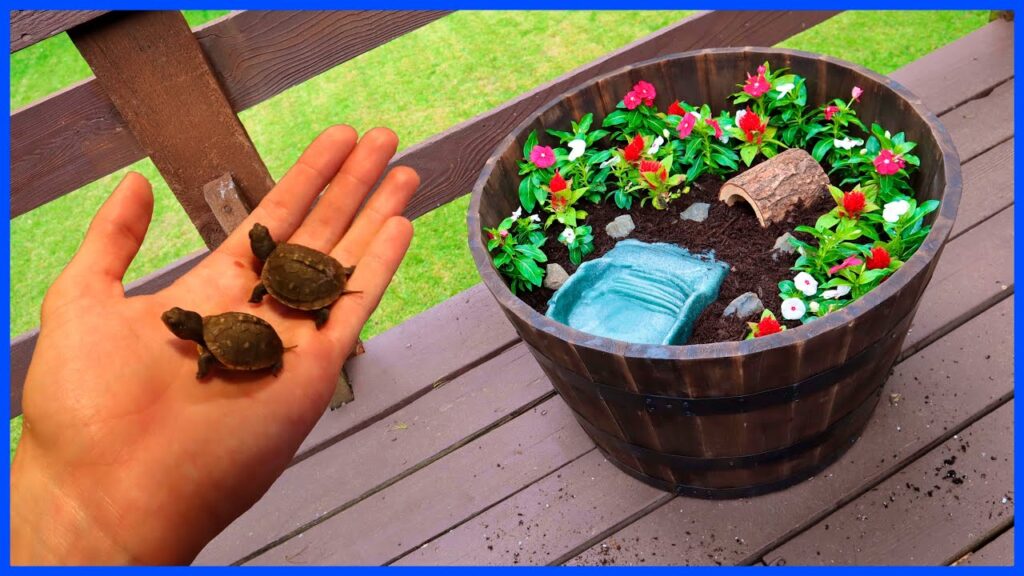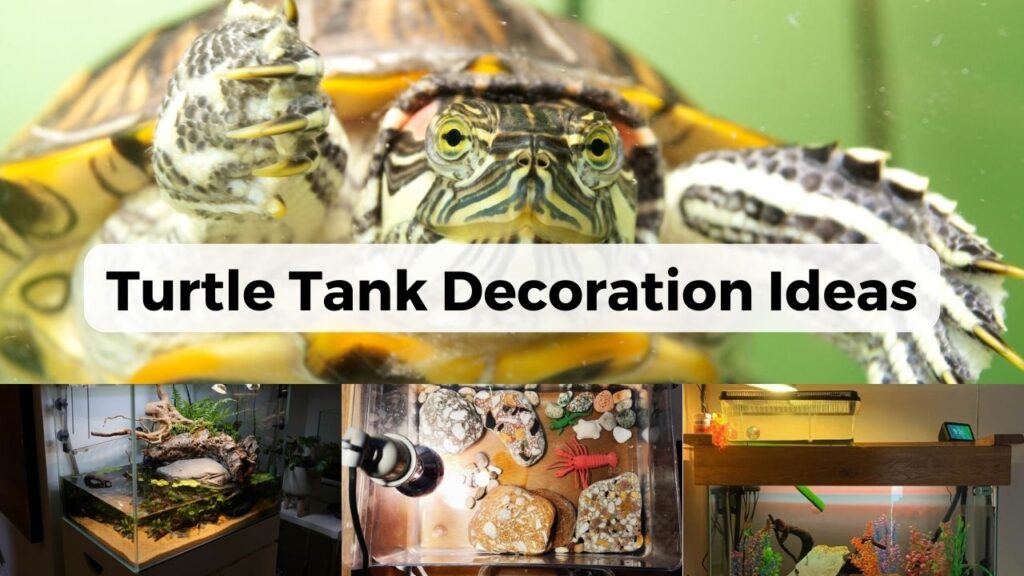If you’re a proud owner of a pet turtle, you know that creating a welcoming habitat for them is crucial. A turtle’s environment plays a significant role in their overall well-being. From providing a naturalistic feel to ensuring their comfort, turtle habitat decoration is an essential aspect of their care. By designing a natural and inviting environment, you not only enhance the aesthetic appeal but also create a space where your turtle can thrive and feel at home. In this article, we will explore some creative ways to decorate your turtle’s habitat, from choosing the right materials to incorporating natural elements that mimic their preferred natural habitats. Say goodbye to boring turtle tanks and say hello to a stunning and captivating turtle habitat!
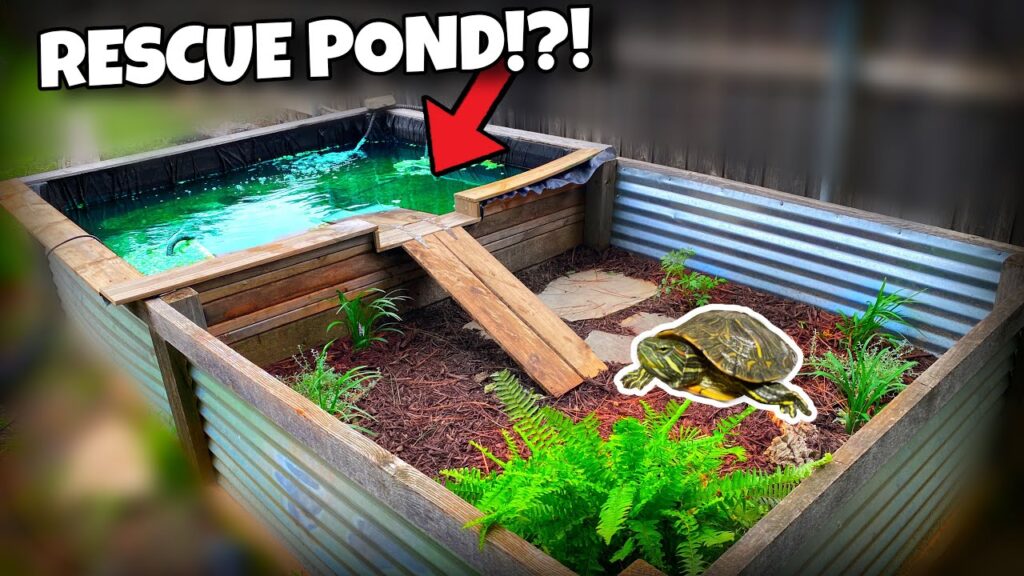
Why is turtle habitat decoration important?
When it comes to caring for your pet turtles, creating a suitable habitat is crucial to their overall well-being. Habitat decoration goes far beyond just aesthetics – it plays a vital role in providing a natural and stimulating environment for turtles. By understanding the natural habitat of these remarkable creatures and incorporating essential elements into their living space, you can promote their physical and mental well-being while enhancing the overall appeal of their habitat.
Understanding the natural habitat of turtles
To effectively create a turtle habitat that replicates their natural environment, it is important to consider the distinction between freshwater and terrestrial turtles. Freshwater turtles, as the name suggests, spend a significant portion of their lives in water, while terrestrial turtles primarily inhabit land. Researching the specific species of turtle you own is crucial, as each species has unique habitat requirements. Factors such as climate, temperature, water conditions, and vegetation should all be taken into account when designing their habitat.
Essential elements for a turtle habitat
To ensure your turtle’s habitat is suitable and enriching, several essential elements must be present. These elements include aquatic features, basking areas, substrate choices, and plants and vegetation. Each component contributes to creating a habitat that truly mimics the turtle’s natural surroundings.
Aquatic features
As most turtles are semi-aquatic creatures, providing a well-designed aquatic section in their habitat is vital. This can be accomplished by incorporating a large enough water area for them to swim and thrive. Utilizing a shallow portion with a gradual slope allows turtles to easily access and exit the water. Aim to replicate a natural pond or lake environment by including materials such as rocks, logs, and aquatic plants.
Basking areas
Turtles rely on external heat sources to regulate their body temperature, making basking areas essential. Basking platforms, preferably made from non-slip materials, should be placed near the water area. Incorporate rocks, logs, or specially-designed basking docks to create comfortable and safe spots for your turtles to soak up the sun. These areas should allow for both dry and wet basking, as some turtles enjoy moistening themselves before soaking up the warmth.
Substrate choices
Choosing the right substrate for your turtle’s habitat is crucial to replicating its natural environment while ensuring cleanliness and hygiene. Natural substrates, such as smooth river stones or fine sand, mimic the turtle’s natural habitat and provide a comfortable surface for them to explore. However, it’s important to research specific turtle species, as some may require specialized substrates. Avoid sharp or coarse substrates that could harm your turtles’ sensitive skin.
Plants and vegetation
Incorporating live or artificial plants and vegetation into your turtle’s habitat offers numerous benefits. Aquatic plants not only provide shade and hiding places but also contribute to water filtration and oxygenation, creating a healthier environment for your turtles. Ensure that any plants or vegetation you choose are safe and non-toxic for your specific turtle species. Researching the compatibility of plants with turtles will help you avoid any potential health risks.
Creating a safe and comfortable aquatic environment
Creating an environment where your turtles can thrive requires attention to detail when it comes to their aquatic space. A safe and comfortable aquatic environment is essential for their overall well-being.
Choosing the right aquarium size
The size of your turtle’s aquarium is crucial for their health and happiness. It should be spacious enough to accommodate their growth while allowing ample room for swimming and exploring. As a general rule, the aquarium should have at least ten gallons of water per inch of turtle shell length, with a minimum dimension of three times their body length.
Filtration and water quality maintenance
Turtle habitats require proper filtration systems to maintain water quality. A high-quality filter will help remove waste, toxins, and excess food particles, ensuring a clean and healthy environment for your turtles. Regular water changes and water quality testing are also necessary to maintain optimal conditions. Monitoring the temperature, pH level, and ammonia and nitrate levels will help prevent health issues.
Regulating water temperature
Turtles are ectothermic creatures, meaning they rely on external heat sources to regulate their body temperature. Maintaining an appropriate water temperature is vital for their overall health and digestion. Depending on the species, water temperatures should range between 75°F and 85°F (24°C to 29°C). Using submersible heaters and thermometers will help you maintain a consistent and suitable temperature for your turtles.
Providing hiding spots and caves
Turtles benefit from having hiding spots and caves within their habitat. These areas offer them a sense of security and privacy, ultimately reducing stress. Use rocks, logs, or commercially available turtle caves to create suitable hiding spots where your turtles can retreat when they feel the need. These hiding places also serve as areas for exploration and stimulation.
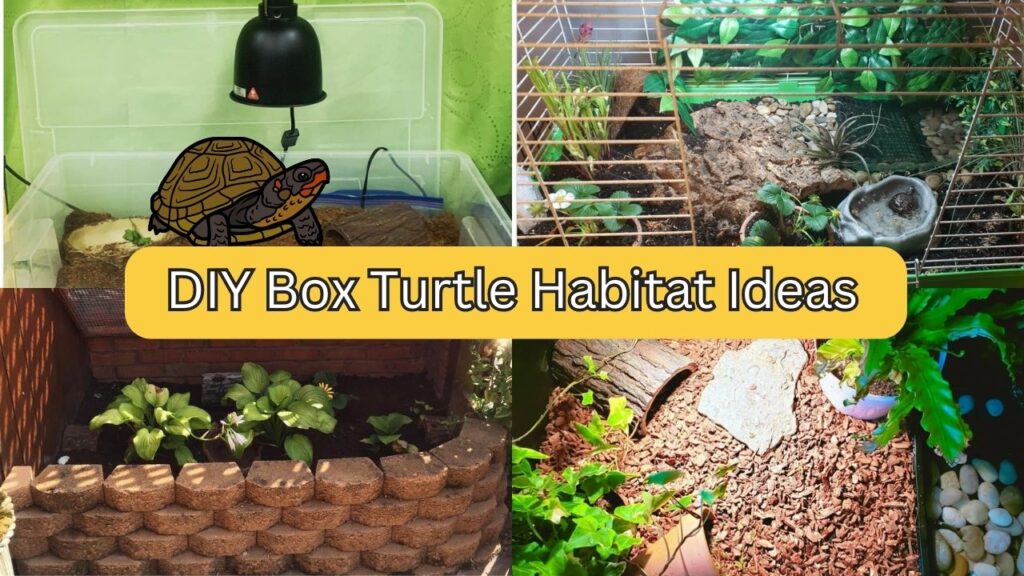
Designing appealing basking areas
Basking areas are essential for turtles, as they rely on external heat sources to regulate their body temperature and aids in their digestion. Properly designing these areas ensures your turtles can bask safely and comfortably.
Optimal basking platforms
When designing a basking platform, aim for one that is large enough for your turtles to fully stretch out and thermoregulate effectively. Ensure the platform is within easy reach of the water area and has secure edges to prevent accidental falls. Non-slip surfaces are crucial to prevent injuries.
Incorporating rocks and logs
Including natural elements like rocks and logs in your turtle’s basking area not only provides a more visually appealing environment but also serves functional purposes. These elements retain heat and help turtles dry off after swimming. Ensure any rocks or logs are securely placed to avoid any potential injuries or instability.
Ensuring proper heat and lighting
Turtles require appropriate heat and lighting in their basking areas to thrive. Heat lamps, specifically designed for reptiles, provide the necessary warmth. Combine this with UVB lighting to ensure proper calcium absorption and overall well-being. Monitor the temperature regularly with a thermometer to maintain a suitable basking environment for your turtles.
Selecting suitable substrates for turtles
Choosing the right substrate for your turtle’s habitat is important for both their physical comfort and hygienic needs. Understanding the different types of substrates and their benefits is crucial.
Natural vs. artificial substrates
Natural substrates, such as river stones, sand, or soil, closely mimic the turtle’s natural environment, providing a more authentic experience. These substrates also allow your turtles to exhibit natural behaviors, such as digging and foraging. However, they require regular cleaning and maintenance to ensure hygiene.
Artificial substrates, such as reptile carpet or paper towel, are easier to clean and maintain, providing a more hygienic option. However, they may lack the visual appeal and tactile experience that natural substrates offer.
Safe options for different turtle species
Different turtle species have varying substrate preferences. Some turtles prefer sandy substrates, while others thrive on river stones or soil. Research your specific turtle species to find out which substrate type is best for them. Avoid substrates that could be ingested and cause digestive issues.
Maintaining cleanliness and hygiene
No matter which substrate type you choose, maintaining cleanliness and hygiene is essential. Regular spot cleaning, removing waste, and maintaining adequate filtration systems will help prevent the buildup of harmful bacteria. Regular substrate changes and cleaning routines are necessary to eliminate any odors or potential health risks.
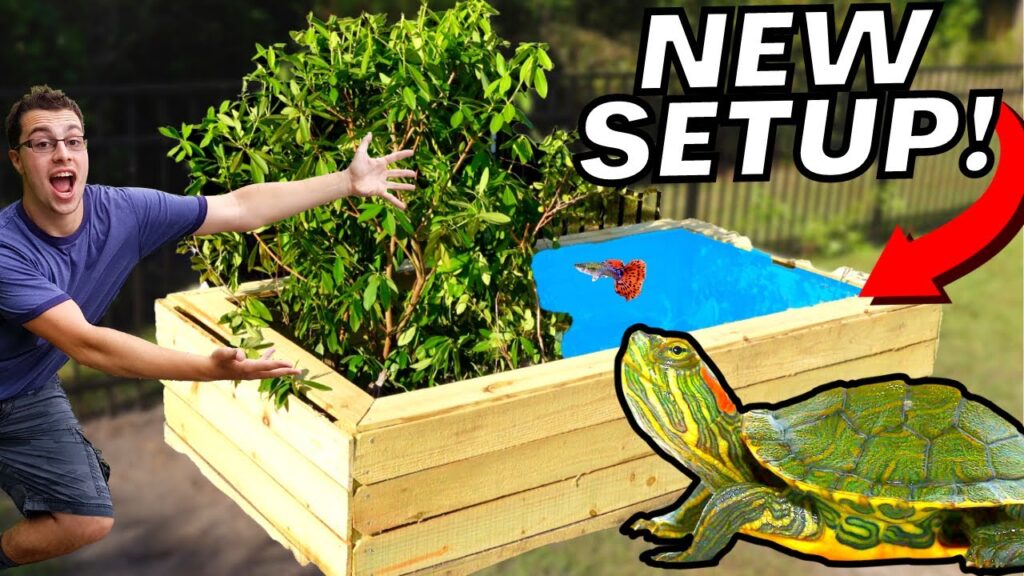
Choosing the right plants and vegetation
Plants and vegetation play a crucial role in creating a natural and stimulating habitat for turtles. Choose suitable species that provide hiding spots, shade, and contribute to water quality.
Aquatic plants suitable for turtle tanks
When selecting aquatic plants for your turtle tank, consider species that can tolerate the conditions of an aquatic environment. Plants such as Anubias, Java Fern, and Hornwort are popular choices. These plants help oxygenate the water, provide hiding places, and enhance the overall aesthetic appeal.
Providing hiding places and shade
Incorporating plants that offer hiding places and shade is important for the well-being of your turtles. Plants with broad leaves or dense growth, such as Amazon Sword or Water Lettuce, create areas of shade where turtles can retreat when they feel the need. These plants also provide visual barriers to reduce stress.
Avoiding toxic or harmful plants
Ensure that any plants you introduce into your turtle’s habitat are safe and non-toxic. Some common houseplants or garden plants may be harmful if ingested. Research each plant thoroughly before introducing them to your turtle’s environment to prevent any potential health issues.
Creating a stimulating environment for mental well-being
Aside from physical well-being, providing a stimulating environment for your turtles’ mental health is equally important. Enriching their habitat with various tools and toys can simulate natural behaviors and enhance their overall well-being.
Introducing enrichment tools and toys
Turtles can benefit greatly from enrichment tools and toys. Objects such as floating docks, tunnels, or even floating food puzzles promote physical activity and mental stimulation. Choose toys that are safe and suitable for your turtle’s size and species.
Simulating natural hunting and foraging behaviors
Turtles, like their wild counterparts, exhibit natural hunting and foraging behaviors. Incorporating elements that allow them to engage in these activities enriches their lives. Scatter food throughout their habitat, or use commercially available food-dispensing toys to mimic their natural foraging instincts.
Implementing a varied and challenging habitat
Creating a varied and challenging habitat ensures your turtles remain mentally engaged. Introduce a variety of textures, hiding spots, and obstacles to encourage exploration. Rearranging the habitat periodically can also keep their environment fresh and exciting.
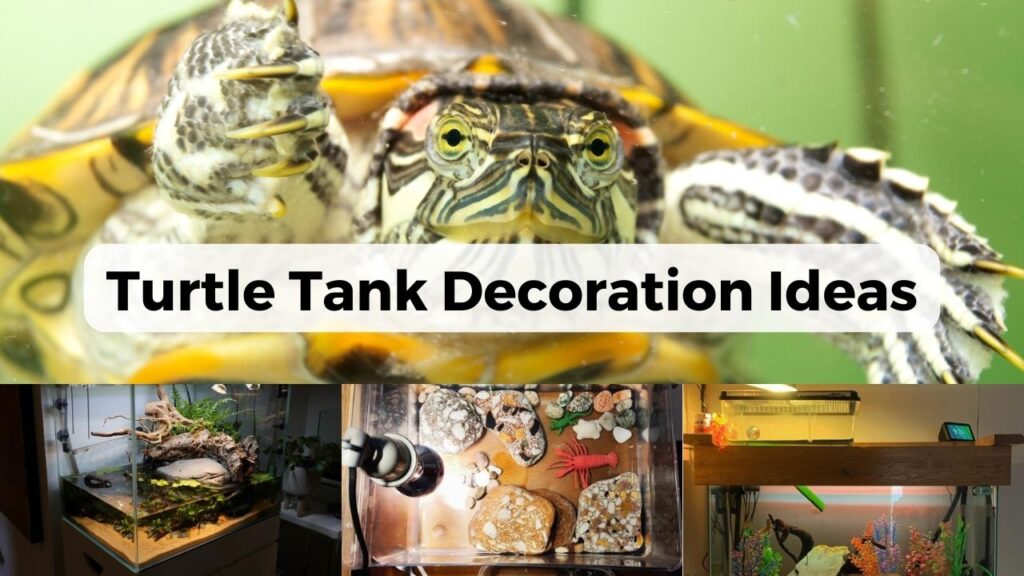
Maintenance and care of turtle habitats
To ensure the long-term health and well-being of your turtles, regular maintenance and care of their habitat are crucial. By following certain guidelines and routines, you can create a clean and safe living space for your beloved pets.
Regular cleaning and water changes
Maintaining proper cleanliness is necessary for your turtle’s health. Regularly spot clean the habitat by removing any waste and debris. Plan for routine water changes, ensuring to dechlorinate the water to remove any harmful chemicals. This prevents the accumulation of ammonia and maintains optimal water quality.
Monitoring water parameters
Regularly monitor water parameters such as temperature, pH level, and ammonia and nitrate levels. Invest in water testing kits to accurately measure these variables. Monitoring these parameters allows you to quickly address any imbalances or issues that could impact your turtle’s health.
Trimming and maintaining plants
If you have live plants in your turtle’s habitat, regular maintenance is essential. Trim dead or decaying leaves to prevent the accumulation of bacteria or fungi. Remove any plants that have become overgrown or obstructive to maintain an aesthetically pleasing and functional environment.
Replacing or repairing damaged decorations
Over time, decorations in your turtle’s habitat may become worn, damaged, or lose their functionality. Ensure you regularly inspect and replace anything that poses a risk to your turtles or compromises the integrity of their habitat. This includes basking platforms, hiding spots, and any other decorative elements.
Conclusion
Creating a suitable and visually appealing habitat for your turtles is essential for their physical and mental well-being. By considering the natural habitat of your turtles, incorporating essential elements, and following proper maintenance routines, you can ensure a healthy and enriching environment for your beloved pets. Prioritize their physical comfort, mental stimulation, and hygiene to provide a habitat that closely replicates their natural surroundings. With a well-designed and cared-for habitat, your turtles will thrive and bring joy for years to come.
